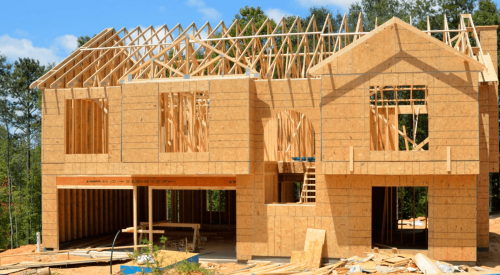Off-the-shelf software sounds easy to use, but anyone will tell you it's anything but plug and play. These preconfigured systems undertake a range of key activities and generally interface with a variety of other business applications. But they're not a complete solution, so don't set your sights too high.
Follow these steps when considering an off-the-shelf software package:
Step 1: Make a list of key functions"Determine what's most important to you, what you need to make your business more profitable, and what other people in the office need," says Leslie Shiner, senior industry advisor at Intuit Construction Business Solutions in Santa Rosa, Calif. "But also understand the difference between needs and wants."
Consider ways a new system can save you time and money. "We use Builder MT scheduling module to flag when there's a construction loan draw or homeowner payment due," says Dan Martin, head of purchasing for Grand Blanc, Mich.-based Sonrise Homes, which builds 200 homes per year. He also uses the software to calculate the profitability of base house costs, track variances and check if contractors are meeting deadlines.
What about your gross margin of options? "Before the Internet, builders would mark up items such as a ceiling fan," explains Stuart Siegel, principal of G2 Technology, a Memphis consulting company. "Today, customers know they can go to Home Depot and buy the same fan themselves for much less, so builders have to charge less for these options. How much are you actually making on your options? Does your system tell you what your real markup is?"
Customer relationship management is another important function. Most builders have a list of buyers in their system but don't use it to the fullest extent. "I have a client who sends his buyers a Christmas card every year," says Siegel. "He invites them to tour his new communities in the hopes that they will consider a move up and to his design center in case they want to update their flooring, for example."
Plan for the future. Jim Waldrop, founder and CEO of HomeSphere software company, warns against buying for now, which could lead to replacing the system a few years later — and additional costs, staff training and software redeployment. "Define your business needs for the next five years, then look for a system that will meet these needs for that time period," he says.
Step 2: Determine which applications need softwareGenerally, individual off-the-shelf systems are available for back office; sales and marketing; scheduling; customer relations management; estimating; and CAD. While some systems cover multiple categories, you won't find one that covers them all, and that can cause some efficiency problems down the road.
Erica Grganto, controller of Lakemont Homes in Roseville, Calif., agrees. Her company produces 800 homes a year. "Originally we had separate accounting and purchasing software, and it was very convoluted. ... [With Newstar] the info goes in once, and all departments generate reports from it."
Step 3: Do the researchAsk peers about their system and check NAHB.org for a list of software products. Popular ones include HomeSphere's Builder 360 and BuildSoft; Constellation's Fast and Newstar; TOM Systems; Mark Systems; Builder MT; Intuit's newly released Easy Estimating; QuickBooks Premier Contractor; QuickBooks Enterprise Solutions Contractor Edition; and MasterBuilder. Many have relationships with third-party developers to augment their offerings.
Overall, software is created for a particular size builder. "Builder MT is good for 50 to 100 homes, but not 200 to 500; Fast and Newstar for 250 to 1,000," Siegel says. Waldrop recommends his company's Builder 360 for larger builders and BuildSoft for smaller ones.
"Have a preliminary discussion with the vendor to see if the software does the functions you require, then identify the programs that would best suit your needs," Waldrop says. Then get a whole-package quote for the software itself plus tech support, training and implementation. Some systems charge per user, such as QuickBooks Enterprise Solutions, which costs $3,000 for five simultaneous users (including a full support plan), $4,500 for 10, and $6,000 for 15. MasterBuilder offers more simultaneous users (each for an additional fee) plus more construction and project management features. Marketing manager John Rogovich says Mark Systems' Integrated Homebuilder Management System costs $100 each for the first 25 homes, $75 each for 26 to 50, and so on, allowing the builder to buy house starts as needed and not commit money upfront. There's an implementation fee for on-site training.
Step 4: Make it happenIt's not just about picking the software. At the onset, Waldrop recommends involving all parts of the organization in the selection decision to understand staffing implications, determine training needs and develop an implementation schedule with realistic expectations and deliverables.
| Author Information |
| Jennifer Block Martin is a San Francisco-based writer. |









